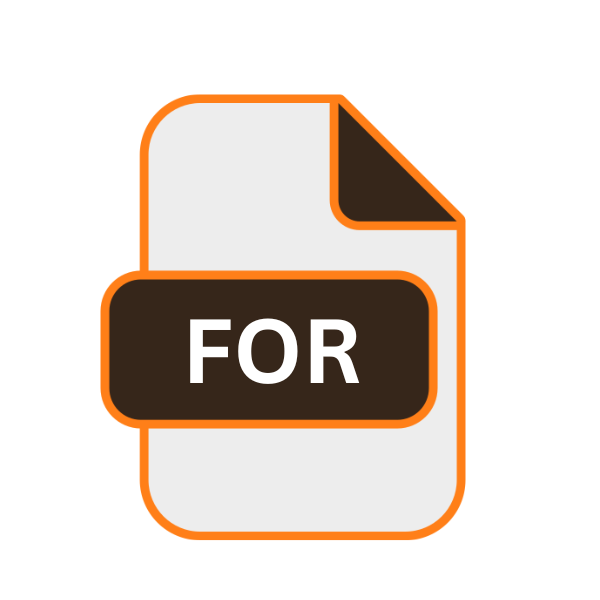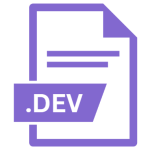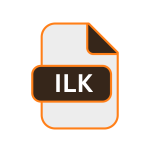.FOR File Extension

Fortran 77 Source File
| Developer | N/A |
| Popularity | |
| Category | Developer Files |
| Format | .FOR |
| Cross Platform | Update Soon |
What is an FOR file?
In the realm of computing, file extensions play a pivotal role in identifying the type and format of data stored within a file. One such extension, .FOR, holds significance for developers and enthusiasts involved in the world of Fortran programming. The .FOR file extension primarily denotes a Fortran 77 Source File.
Fortran, short for Formula Translation, is one of the oldest high-level programming languages, renowned for its efficiency and performance in scientific and engineering applications.
More Information.
Fortran 77, the version associated with the .FOR file extension, was released in 1977, building upon its predecessor, Fortran IV.
It introduced several enhancements and features, including structured programming constructs and support for character manipulation. .FOR files were the primary means by which Fortran source code was stored and shared among developers.
These files contained human-readable code comprising a series of statements and constructs written in the Fortran programming language.
Origin Of This File.
The .FOR file extension traces its roots back to the mid-20th century when Fortran emerged as the pioneering programming language for numerical and scientific computing.
Developed by IBM in the late 1950s, Fortran revolutionized the way engineers and scientists interacted with computers, offering a structured and efficient means of expressing mathematical algorithms and computations.
File Structure Technical Specification.
A typical .FOR file consists of plain text content written in the Fortran programming language. The structure adheres to the syntax and conventions specified by the Fortran 77 standard.
The file may include declarations, subroutines, functions, and other program components necessary for defining algorithms and computational tasks. Comments, denoted by specific markers, serve to enhance code readability and provide explanatory notes for developers.
While the exact structure may vary depending on the complexity of the program, a basic .FOR file usually includes:
- Program Statements: These constitute the core instructions that dictate the behavior and logic of the program.
- Variable Declarations: This section defines the variables used within the program, specifying their data types and initial values.
- Control Constructs: Fortran 77 supports various control structures, such as loops and conditional statements, enabling developers to manage program flow and execution.
- Subroutines and Functions: These modular components encapsulate specific tasks or computations, promoting code reusability and maintainability.
How to Convert the File?
Converting a .FOR file to another format typically involves translating the Fortran source code into a different programming language or executable format. Several tools and utilities exist to facilitate this process, including:
- Compiler Suites: Fortran compilers, such as GNU Fortran (gfortran) and Intel Fortran Compiler (ifort), can translate .FOR files into executable binaries or object code compatible with various platforms.
- Code Migration Tools: Specialized tools, such as f2c (Fortran-to-C converter) and f2py (Fortran-to-Python converter), enable the conversion of Fortran code into other languages like C or Python, allowing for easier integration with modern systems.
- Manual Translation: In some cases, manual translation of the Fortran code may be necessary, especially when migrating to languages with significantly different syntax or paradigms.
Advantages And Disadvantages.
Advantage:
- Efficiency: Fortran is renowned for its efficiency in numerical computations, making it well-suited for scientific and engineering applications.
- Stability: Fortran 77, despite its age, remains a stable and widely-used language in certain domains, with extensive libraries and tool support.
- Performance: Fortran’s static typing and array-oriented syntax facilitate optimized code generation and execution, leading to superior performance compared to some modern languages.
Disadvantage:
- Complexity: Fortran’s syntax and semantics may appear archaic and complex to developers accustomed to more modern languages, potentially posing a steep learning curve.
- Limited Language Features: Fortran 77 lacks many modern language features found in contemporary programming languages, such as object-oriented constructs and advanced memory management.
- Maintenance Challenges: Legacy Fortran codebases often require meticulous maintenance and may face interoperability issues when integrating with newer technologies and platforms.
How to Open FOR?
Open In Windows
Opening .FOR files in Windows primarily involves using a text editor or integrated development environment (IDE) capable of handling Fortran source code. Popular options include Notepad++, Visual Studio with Fortran support, and Emacs with Fortran mode.
Open In Linux
Linux users can leverage a wide range of text editors and IDEs available on the platform to open and edit .FOR files.
Common choices include Vim, GNU Emacs, Sublime Text, and integrated development environments like Eclipse with Fortran plugins.
Open In MAC
On macOS, developers can utilize text editors such as TextEdit or more specialized IDEs like Xcode with Fortran support to work with .FOR files. Command-line tools like Vim and Emacs offer powerful editing capabilities for Fortran source code.
Open In Android
While editing .FOR files directly on Android devices may be less common, developers can explore text editor apps available on the Google Play Store, such as Dcoder and Quoda, which support Fortran syntax highlighting and basic editing functionalities.
Open In IOS
Similarly, iOS users can opt for text editor apps like Textastic and Koder, which provide support for editing Fortran source code on iPhones and iPads.
These apps offer features like syntax highlighting and code completion to enhance the development experience.
Open in Others
For platforms not covered above, developers can resort to cross-platform text editors and IDEs, such as Atom and Sublime Text, which offer consistent support for .FOR files across various operating systems, including Windows, Linux, macOS, Android, and iOS.













